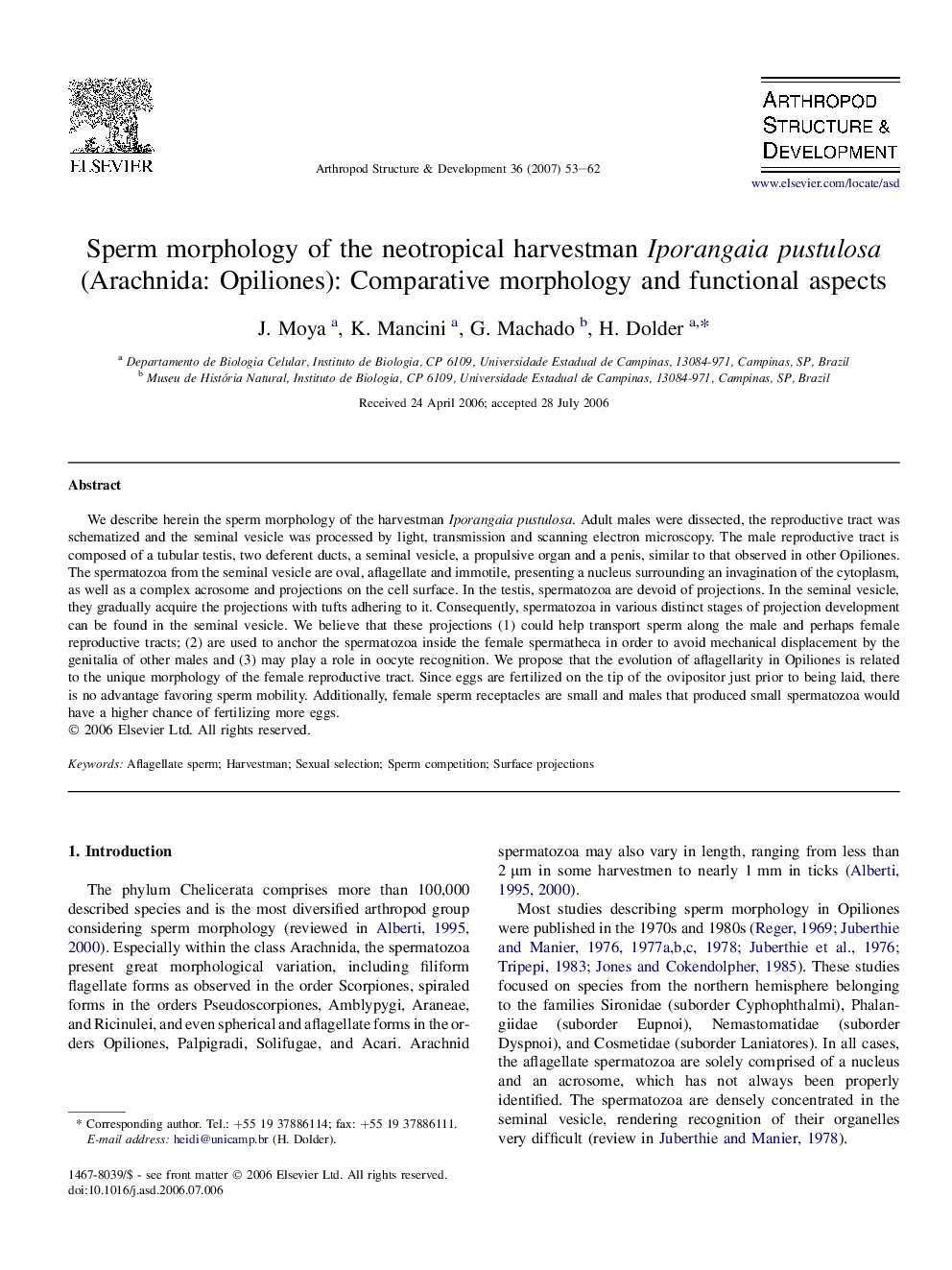| کد مقاله | کد نشریه | سال انتشار | مقاله انگلیسی | نسخه تمام متن |
|---|---|---|---|---|
| 2779105 | 1153199 | 2007 | 10 صفحه PDF | دانلود رایگان |

We describe herein the sperm morphology of the harvestman Iporangaia pustulosa. Adult males were dissected, the reproductive tract was schematized and the seminal vesicle was processed by light, transmission and scanning electron microscopy. The male reproductive tract is composed of a tubular testis, two deferent ducts, a seminal vesicle, a propulsive organ and a penis, similar to that observed in other Opiliones. The spermatozoa from the seminal vesicle are oval, aflagellate and immotile, presenting a nucleus surrounding an invagination of the cytoplasm, as well as a complex acrosome and projections on the cell surface. In the testis, spermatozoa are devoid of projections. In the seminal vesicle, they gradually acquire the projections with tufts adhering to it. Consequently, spermatozoa in various distinct stages of projection development can be found in the seminal vesicle. We believe that these projections (1) could help transport sperm along the male and perhaps female reproductive tracts; (2) are used to anchor the spermatozoa inside the female spermatheca in order to avoid mechanical displacement by the genitalia of other males and (3) may play a role in oocyte recognition. We propose that the evolution of aflagellarity in Opiliones is related to the unique morphology of the female reproductive tract. Since eggs are fertilized on the tip of the ovipositor just prior to being laid, there is no advantage favoring sperm mobility. Additionally, female sperm receptacles are small and males that produced small spermatozoa would have a higher chance of fertilizing more eggs.
Journal: Arthropod Structure & Development - Volume 36, Issue 1, March 2007, Pages 53–62